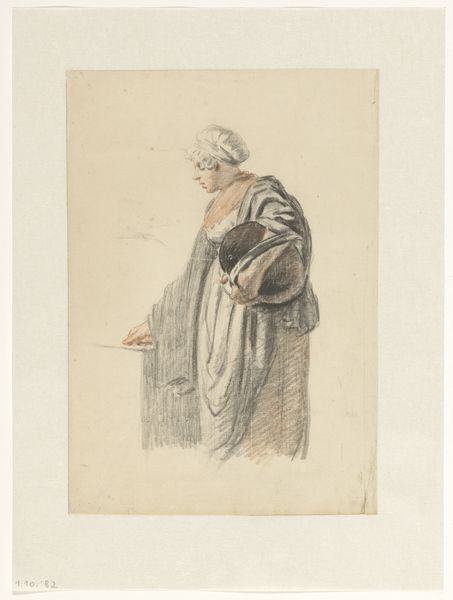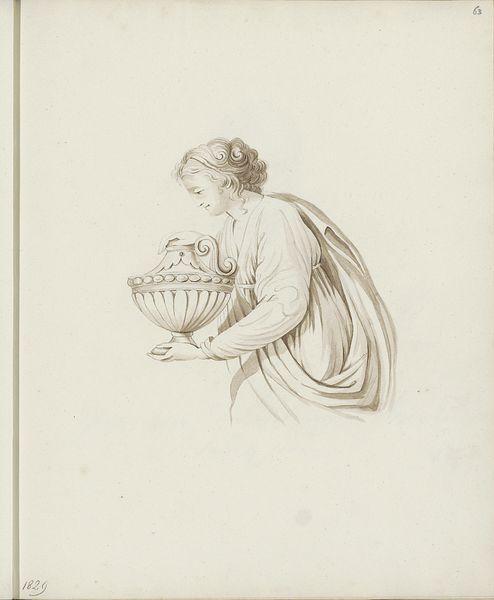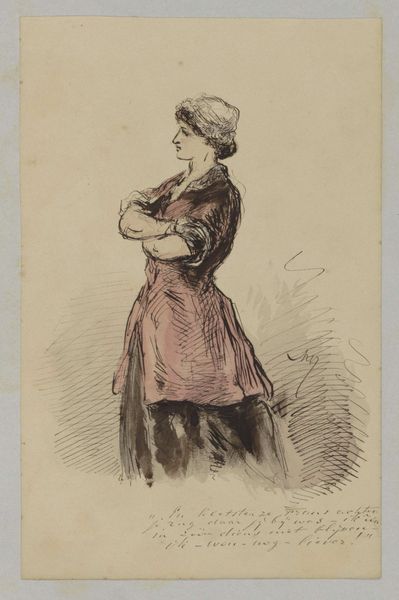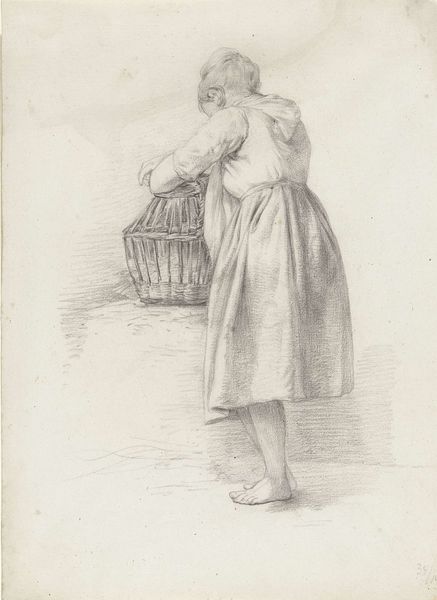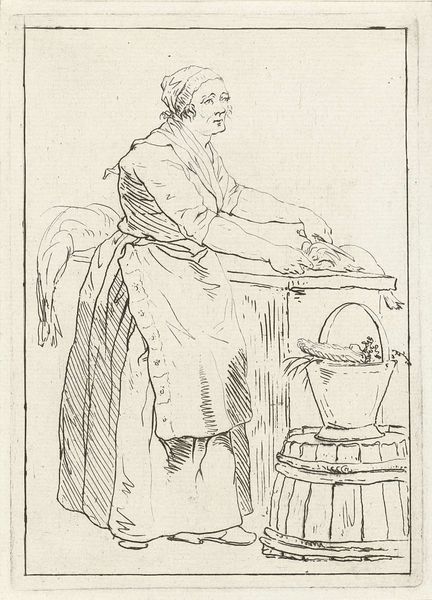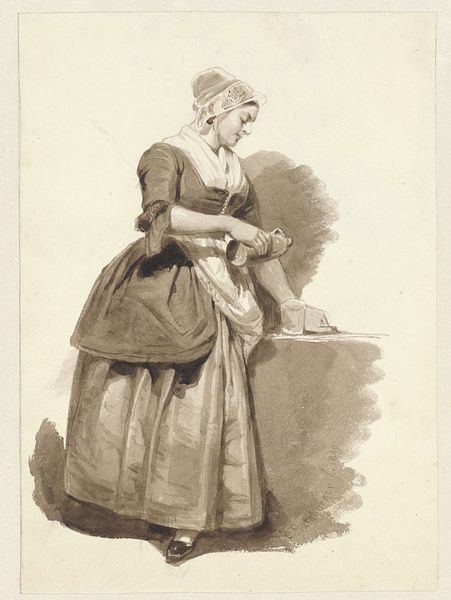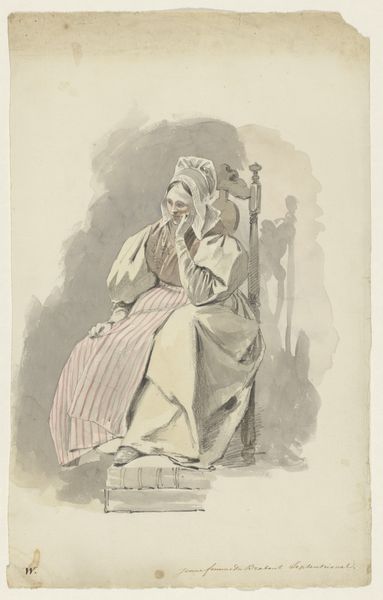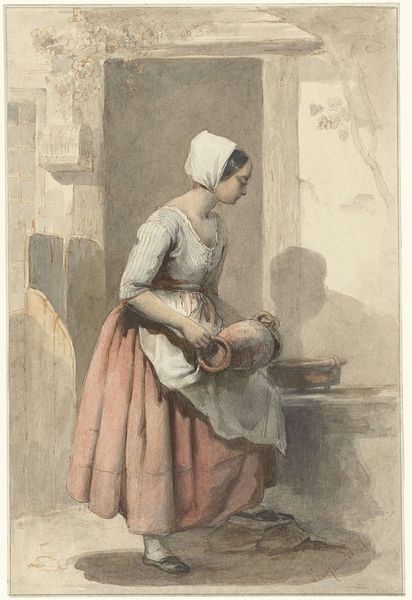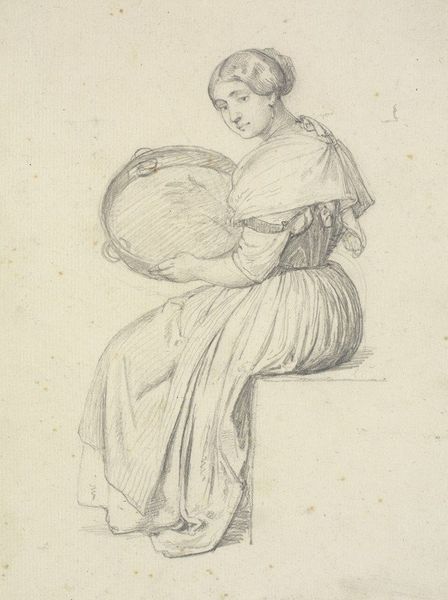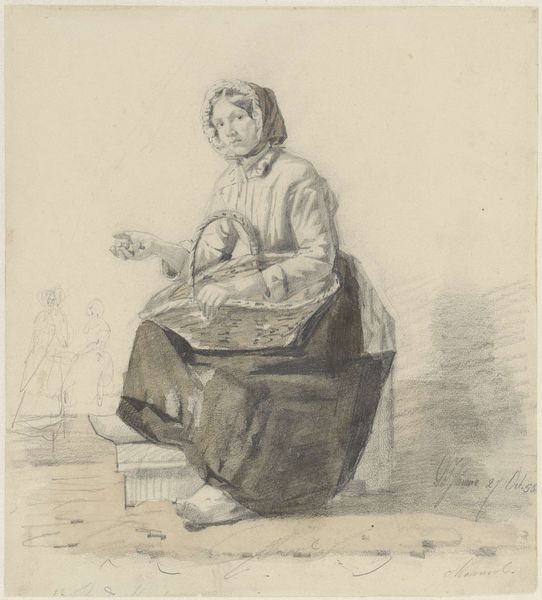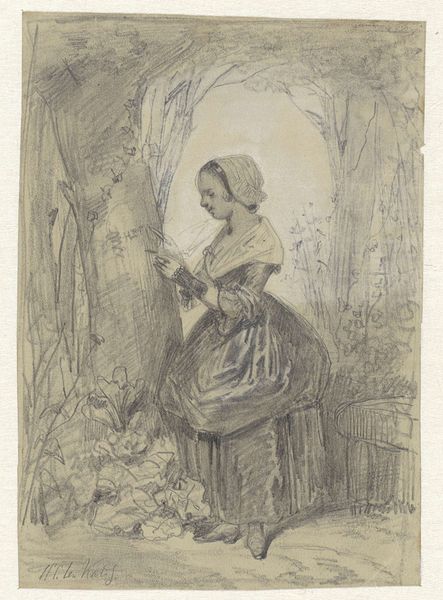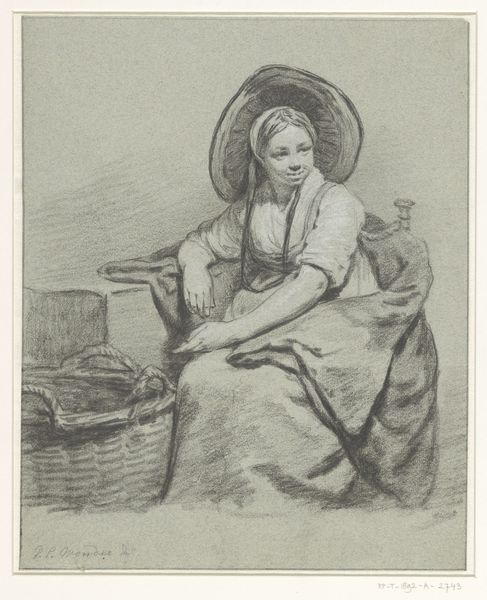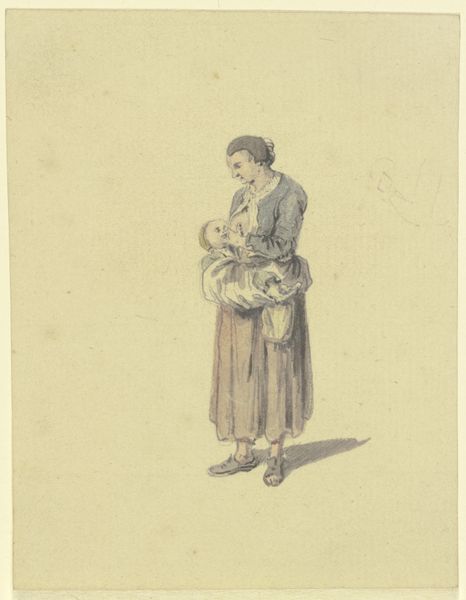
drawing, watercolor
#
portrait
#
drawing
#
light pencil work
#
dutch-golden-age
#
pencil sketch
#
personal sketchbook
#
watercolor
#
sketchbook drawing
#
watercolour illustration
#
genre-painting
#
sketchbook art
Dimensions: height 296 mm, width 240 mm
Copyright: Rijks Museum: Open Domain
Curator: Here we have "Dienstmeid die bij een waterpomp een schaal afwast," which translates to "Maidservant Washing a Dish at a Water Pump" by Pieter van Loon. It was likely created between 1811 and 1873. The Rijksmuseum houses this drawing, made with watercolor and pencil. Editor: It strikes me immediately as very subdued, almost melancholic. The palette is muted, predominantly cool blues and grays. Even though it depicts a domestic scene, there's a distinct lack of warmth. Curator: Note how van Loon captures the light. Observe the almost translucent quality of the maidservant's cap and apron. It draws the eye to the central activity. Editor: Yet the scene seems burdened with the weight of labor. The water pump suggests a life tied to manual tasks. It certainly resonates with narratives about women in servitude, their stories so often unheard. Curator: Precisely. But if we observe closely the composition of the overall drawing, it’s an interesting exercise in perspective and depth. There are the details like the wicker basket beneath the washstand or the faint rendering of foliage in the background. Editor: It’s that background, and the inclusion of nature struggling to creep into this otherwise rigid indoor space, that I find poignant. Does it symbolize hope? Curator: That is a subjective reading. You could as well infer that the inclusion of foliage merely serves a counterpoint for what appears inside the water pump location. Editor: The contrast between that hard structural geometry of that enclosure and the very body of the maidservant, bending over in the action, does bring the servitude issue in the focus again for me. I’m very aware of how gender and social roles play in the artworks like that. Curator: We may never know van Loon's intent. But a great value of any art is the exchange, the invitation to look and reconsider that it facilitates. Editor: Absolutely. Engaging with the social context helps us unpack hidden stories. I can see how his intimate approach to the mundane becomes unexpectedly compelling.
Comments
No comments
Be the first to comment and join the conversation on the ultimate creative platform.
